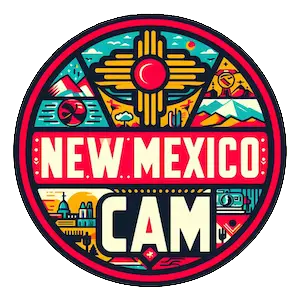Clines Corners, NM Weather Cams
Clines Corners Cam
Clines Corners: The Dusty Crossroads at the Heart of New Mexico
Glorieta, NM Weather Cams. Deep in the sun-baked deserts of southern New Mexico, where the flat horizons stretch out as far as the eye can see, lies the tiny town of Clines Corners. This dusty crossroads has played an outsized role in the history of the region, serving as a vital stagecoach stop, railroad depot, and traveler’s oasis over the centuries. Though just a speck on the map today, Clines Corners has been the intersection where countless journeys across the Southwest have paused and intersected over the years.
The earliest recorded history of Clines Corners dates back to the 1820s when it was a popular campsite along the Camino Real trail for traders carrying goods between Mexico City and Santa Fe. Its location at the junction of two ravines ensured a modest supply of water could usually be found, making it a reliable waypoint for the mule caravans to rest and replenish their supplies. The first semi-permanent structures appeared in the 1840s as more and more travelers began stopping at “Los Cruces de Cline” as it was known to the Mexican arrieros.
After the Mexican-American War ended in 1848, traffic along the Camino Real trail exploded as American settlers and entrepreneurs headed west. An enterprising trader named Josiah Cline established a small store and primitive inn at the crossroads in 1853, solidifying the name of the burgeoning settlement. Soldiers from nearby Fort Cummings were among the first customers, and soon other merchants arrived to open saloons, shops, and lodges to cater to the steady stream of emigrants, horse traders, prospectors, and outlaws passing through the area.
Clines Corners’ greatest period of growth came in the 1880s with the arrival of the Southern Pacific Railroad. The town was selected as the site for a rail depot and water stop, ensuring its importance as a resupply hub. Over the next few decades, it rapidly grew into a quintessential frontier railroad town filled with stockyards, warehouses, hotels, and the requisite gambling halls and saloons. At its peak in the 1890s, Clines Corners boasted a population of over 2,500 rough and rowdy souls.
Train robbers like Black Jack Ketchum and the Wild Bunch preyed on rail passengers at Clines Corners, while on the outskirts of town, the Buffalo Soldiers of the 10th Cavalry Regiment were periodically called in to chase down raiding Apaches. Outlaws and law men seeking each other out made Clines Corners as violent as it was prosperous during its heyday. Dozens of gunfights took place along its dusty main street as the Earp brothers, Pat Garrett, and other famed lawmen of the Old West all spent time in the town.
However, the 20th century brought a slow decline as the railroad companies rerouted their main lines and built more efficient facilities elsewhere in the region. The Great Depression proved to be Clines Corners’ death knell as people moved away seeking work in larger cities. Most businesses had shuttered by the onset of World War II, leaving just a handful of residents. Although the railroad depot remained open until 1971 thanks to nearby potash and copper mining operations, Clines Corners had already faded into a semi-ghost town by that point.
In the 1960s, the few remaining residents sought to revive interest in Clines Corners by leaning into its rowdy Wild West heritage through efforts to restore and preserve its crumbling adobe buildings from the 1800s. The creation of the annual “Shootout on Salt Street” festival featuring re-enactors and parade brought tourists trickling back. But without any major highways or interstates passing nearby, the economic revival efforts were only partially successful. Today less than 200 people call Clines Corners home.
While just a tiny dot on the map, Clines Corners remains an intriguing glimpse back into the quintessential frontier railroad towns that once dotted the American Southwest in the late 1800s. Its surviving buildings like the Grand Southern Hotel and Clines Mercantile stand as reminders of the pivotal role this dusty crossroads once played for emigrants, settlers, prospectors and wanderers seeking their fortunes in the desert. Though its glory days are long past, Clines Corners preserves a vanished chapter of history when the West was still wild.
For more information, visit the Route 66 Clines Corners, New Mexico website.
